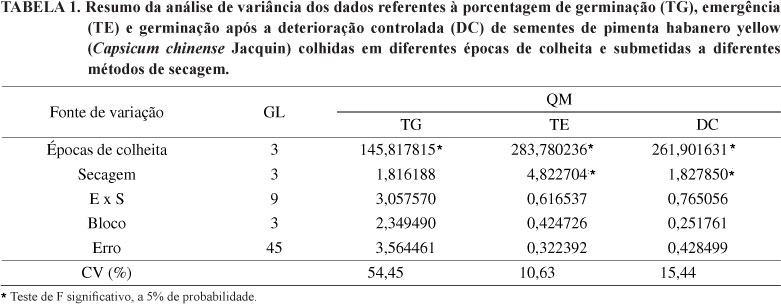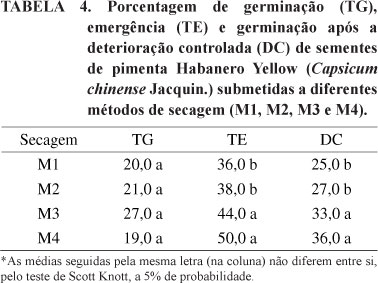Peppers are widely grown in Brazilian horticulture. The interest of food industries in spicy species, such as 'Habanero' pepper, has steadily increased, especially for producing sauces and dehydrated condiments. Consequently, industrial demand for quality seeds has risen considerably. The objective of this research was to evaluate the effects of seed harvest timing and drying on the quality of 'Habanero Yellow' pepper seeds. The seeds were harvested from fruits at four different times (E1 - 50; E2 - 60 ; E3 - 67 ; E4 - 67 days after anthesis-DAA) and were stored for 7 days after harvesting. These seeds were submitted to four drying methods: artificial drying at 45 ºC until 8% water content; artificial drying at 35 ºC until 20% water content followed by drying at 45 ºC until 8% water content; artificial drying at 35 ºC until 8% water content; and natural drying under shade until 8% water content. The physiological quality of seeds before drying was evaluated from germination, emergence and accelerated aging tests, besides isozymes analyses (esterase, superoxide dismutase, peroxidase, malate dehydrogenase, alcohol dehydrogenase and endo-β-mannanase). After drying, the physiological quality of the seeds was evaluated from germination, emergence and controlled deterioration tests. The highest physiological quality of the seeds was at 67 DAA, when the fruits were completely ripe. The highest values for germination and vigor were observed for seeds dried at 35 ºC.
Capsicum chinense Jacquin; seed formation; enzymes; seed vigor






